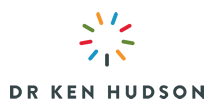Brainstorming is the most popular creativity tool for groups.
From my research managers and team leaders mention its many positive features.
It is simple, a break from normal work, social and often fun.
Yet there are many frustrations with brainstorming which are often caused by the following 9 mistakes.
1. The topic is kept a secret until the session starts
The problem with this approach whilst is feels creative and mysterious it means that participants have no time to think about the topic or prepare in any way.
I recommend that you send out the challenge 24 hours beforehand and ask people to come along with say 3 ideas. In this way if you have 10 people you could start the session with 30 ideas!
2. The challenge is kept broad so as to not inhibit creativity.
It is a paradox but i have found that the tighter the brief — the more creative you have to be. Simply asking people for some ideas might sound innovative but it is much better for example, to ask for some new ideas aimed at improving our customer service that we could test in the next 2 months.
3. Invite only the experts
This sounds sensible but sometimes the experts are so close to the problem they literally cannot see a new perspective or solution.
I suggest that you mix the people close to the problem with some that are on the edge of it. This dynamic tension produces more creative and dynamic interactions.
4. Don’t tell anyone how the ideas are to be evaluated
Have you ever attended a brainstorming session where some good ideas have been generated but when it comes to evaluating these no-one seems to have a clue as to how to do it.
What’s more there is often disagreement as to how to evaluate the ideas. This sometimes means that the session runs out of energy and more importantly some great ideas may slip though the cracks.
A much better practice is to set out the challenge and also how the ideas are to be evaluated e.g. we will evaluate the ideas according to impact and cost. By doing so you also help the participants before the session to self-evaluate their own ideas.
5. Leave evaluation until the end of the session.
Another big mistake is to leave the evaluation to the very end of the session. What typically happens in these situations is that the group runs out of time so that no evaluation takes place.
I prefer to evaluate as you go. Start the session and then have a quick evaluation e.g. what are our great ideas? What can we reject and what is interesting but needs more work?
In this way the group can focus in on those ideas that are original but need extra attention.
6. You take it in turns to contribute ideas.
According to research this is one of the biggest barriers to running an effective brainstorming session.
Taking turns to contribute ideas is polite but leads to what is called Production blocking. This means that it takes extra cognitive effort to both hold on to an idea waiting for your turn whilst trying to keep up with the conversation.
A much better process is to start with everyone working by themselves to generate ideas. This means you do not have to wait for others, extroverted people do not dominate the discussion, the number of ideas increases and everyone has to think for themselves.
7. The session is more than 1 hour.
Brainstorming like any fitness session should be done faster and more frequently.
The ideal session should be fun, playful, moves at a quick pace and is energetic. It is much better to run a number of shorter sessions from 30 to 60 minutes where everyone is engaged than one long one which lasts for hours and hours.
People cannot maintain their energy if it is too long and if they become bored or restless you lose their creativity. Think smaller and more frequent and people will be more likely to attend.
8. The session leader kicks things off with their ideas.
We have all done it. You call a session and then in an attempt to get things moving you put forward your ideas. Sometimes you just need to because the group perhaps is new and it is an uncomfortable issue.
The problem with leading the discussion in this way is that once you have established a pattern or set of ideas it is hard to escape these ideas and think of anything new.
It is much better to start with the individual and let the ideas emerge and flow.
If you want to get started in a constructive way then just give some examples but frame these as possibilities only which may or may not be used again.
9. Brainstorming is an ideal tool for every problem, challenge or opportunity.
Brainstorming can be a powerful tool. But as Abraham Maslow said, if you only have a hammer — everything starts to look like a nail.
Formal brainstorming is an appropriate tool if you have a a relatively complex or difficult problem that requires a group of people to solve and you have time on your hand.
But sometimes the problem is more straightforward, which does not require a large group and there is some pressure to solve the problem quickly.
Sometimes you just need to solve a problem or generate some new ideas by yourself.
In these cases other tools like mindmapping or our new Ideas Blitz might be a more effective and efficient choice.
in summary, Brainstorming like any tool, if used correctly can be a wonderfully creative, engaging and productive.
Try avoiding these mistakes and you will run breakthrough sessions again and again.

